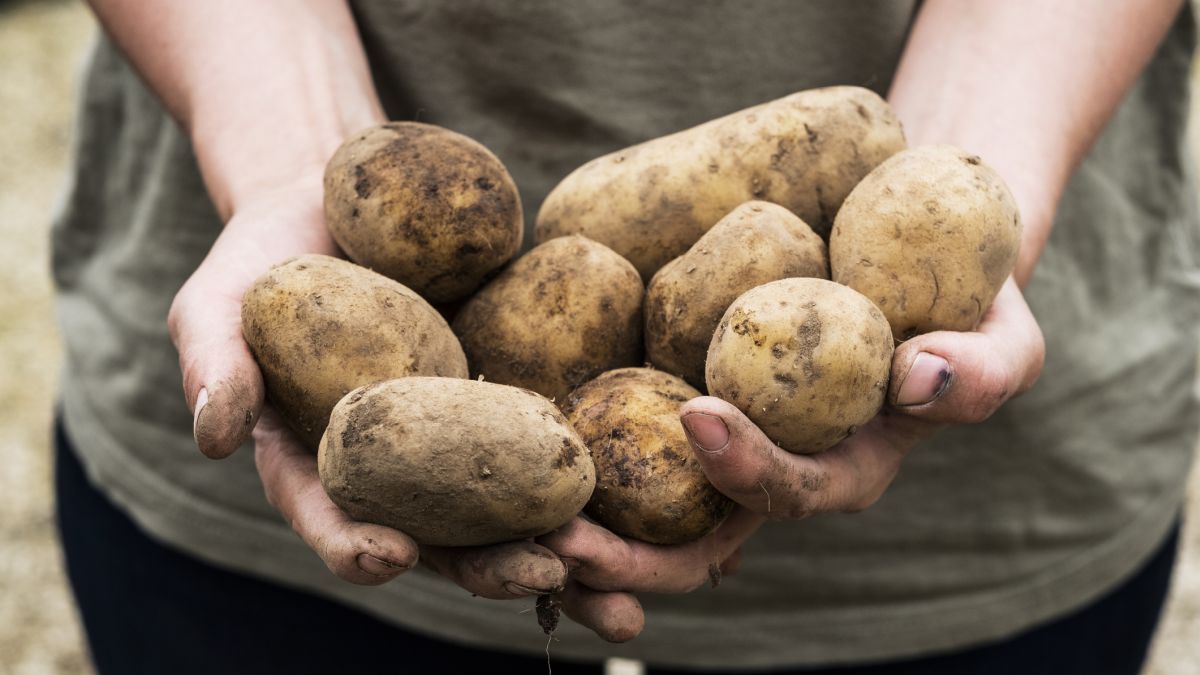
Living
A New Antibiotic Found in Diseased Potatoes Protects Plants & Humans From Fungal Infections
Antibiotic resistance is a major public health concern. As resistance develops to existing antibiotics, we are losing our ability to effectively treat common infections. Antibiotic resistance is also a problem for agriculture. As farmers overuse antibiotics to promote growth in livestock and protect crops from disease, resistant bacteria are developing that could ultimately jeopardize the food supply. The solution to this problem lies in developing new antibiotics.
Researchers in Europe have discovered a new antibiotic that could help to combat the growing threat of drug-resistant infections. The antibiotic, called solanimycin, is produced by bacteria found in diseased potatoes. In laboratory tests, solanimycin was found to be effective against a variety of fungal infections.
The recent discovery is just the latest example of the potential for therapeutic microbes to be found in soil. This find could lead to even more success in searching for new compounds among plant-based microorganisms.
“We have to explore more expansively across microbial populations,” said one of the study’s authors, Dr. Rita Monson, a microbiologist at the University of Cambridge,
Dickeya solani, the bacteria being studied, was discovered more than 15 years ago. Another antibiotic called oocydin A came from this same bacteria and proved successful in fighting various plant diseases. Furthermore, by sequencing the bacterium’s genome, other hidden antibiotic compounds were found within its background. When they switched off the genes responsible for producing oocydin A and put the bacteria in an acidic environment like that of a potato – it would activate genes to create solanimycin.
“Solanimycin appears to work by terminating other fungi and giving the bacteria a competitive edge. However, it is only effective if the potato carries the infection,” said Monson.
Solanimycin has a wide range of antimicrobial activity, making it an effective treatment for both bacterial and fungal infections. In addition, solanimycin may be effective against Candida albicans, a yeast that is naturally present in our bodies. If left unchecked, this yeast can cause dangerous infections.
Monson is partnering with chemists to study solanimycin’s molecular structure in order to discover more about the compound and eventually test it on plant and animal models.
Living
Drones Are A Powerful Ally For Animal Right Campaigners
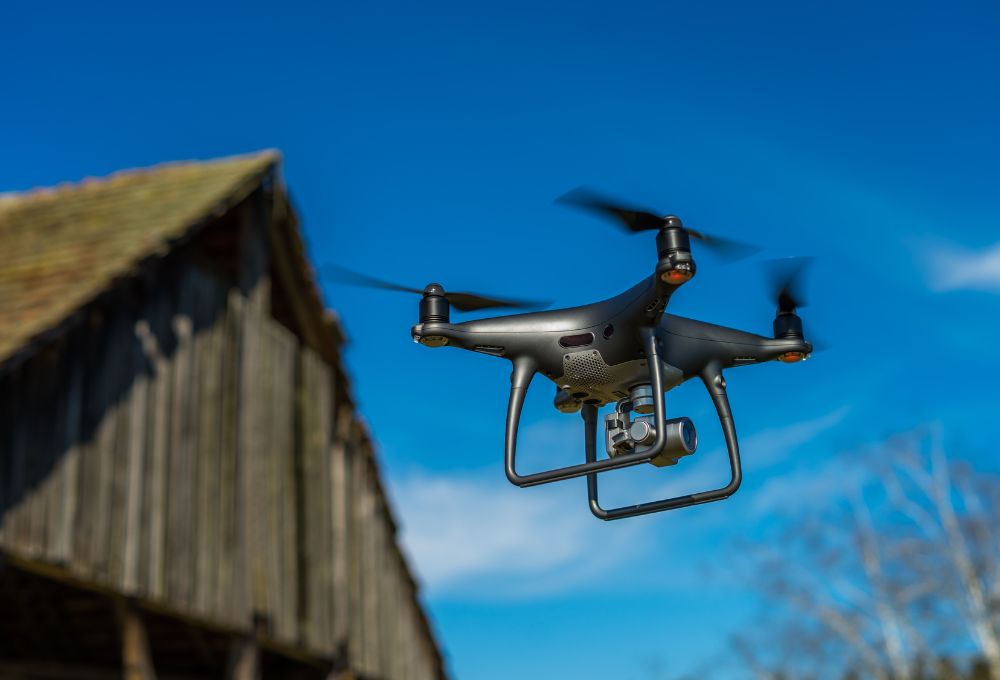
Drones have become powerful allies for animal rights campaigners, offering a bird’s-eye view that’s hard to beat. These flying gadgets are not only affordable but also simple to operate, making them perfect for keeping an eye on illegal activities like fishing, hunting, and deforestation. They’re also great for monitoring conditions in zoos and aquariums.
A striking example comes from UrgentSeas, an organization that sprang into action after hearing about a lonely manatee at the Miami Seaquarium. Using drones, they captured footage of the manatee, named Romeo, in a neglected pool. The video went viral, leading to public outrage and eventually the relocation of Romeo and his mate Juliet to a sanctuary.
Since their introduction in the early 2010s, drones have been revolutionary for groups like PETA, who’ve used them to uncover illegal hunting activities. In marine conservation, drones offer an unparalleled view of the living conditions of sea creatures, highlighting the cramped spaces in some facilities.
Sea Shepherd, a marine conservation group, utilizes drones to document illegal fishing activities in international waters. The advancements in drone technology have made these devices quieter and more discreet, crucial for documenting illegal actions without alerting the perpetrators. Simon Ager of Sea Shepherd emphasizes the effectiveness of drones in these operations, noting their ability to capture evidence of illegal activities from a safe distance, thus reducing the risk to conservationists.
In essence, drones are more than just tools; they represent a shift in how activists and conservationists can safely and effectively gather evidence, raise awareness, and prompt action to protect animals and their habitats. They enable discreet observations and can reach places that are otherwise inaccessible or risky for humans, proving to be an indispensable asset in the fight for animal rights and environmental protection.
Living
New Bazaar Blends American & Indian Cultures
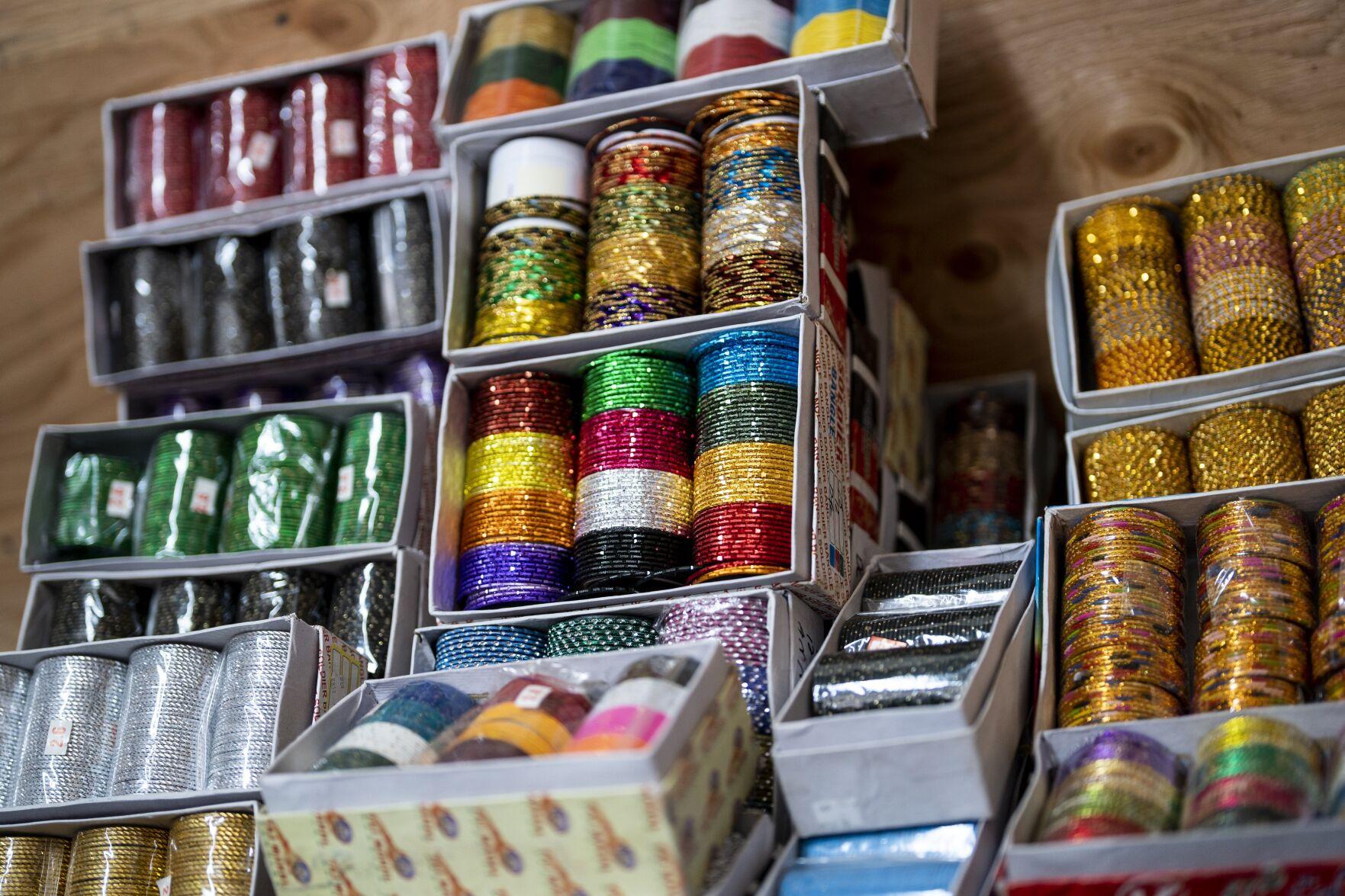
In Buffalo’s East side, something exciting is happening at the Buffalo Trade Center! It’s becoming a bustling market, blending Indian and American cultures, thanks to Samad, a visionary with Indian roots but raised in the U.S. This new market isn’t just any ordinary place; it’s a vibrant bazaar with 30 vendor stalls, offering a sneak peek into a future filled with shops, a halal supermarket, offices, a playground for kids, a restaurant, a food hall, and a community center.
Samad, together with his uncles Khaled Ali, Iqbal Ali, Moynul Samad, and Faisal Ahmed, owns this center. They’re embarking on an ambitious project, starting with the vendor stalls and a retail liquidation center, all set to open this summer. But the excitement has already begun with a pop-up vendor festival, especially timed for Ramadan, attracting thousands of people and giving a taste of what’s to come.
This market is more than just a place to shop; it’s a springboard for aspiring business owners. Samad’s idea is to create a space where anyone with a dream can start their business journey with minimal initial costs and supportive surroundings. Last year, this place drew in 5,000 visitors, and it’s clear it has a special vibe that people love.
Samad’s vision extends beyond business. He aims to build a community that reflects the diversity and inclusivity of Buffalo itself. He’s looking for vendors who are not only entrepreneurial but also kind and welcoming to everyone, reinforcing that the Buffalo Trade Center is a place for all, not just for the Bangladeshi community.
Through Samad’s efforts, the Buffalo Trade Center is set to be a hub where different cultures meet and mingle, proving that despite our diverse backgrounds, we share more similarities than differences. This market is shaping up to be a place where community, culture, and commerce come together beautifully.
Living
Eagle Rescue: Maryland Officer Saves Bald Eagle Trapped in Car Grille
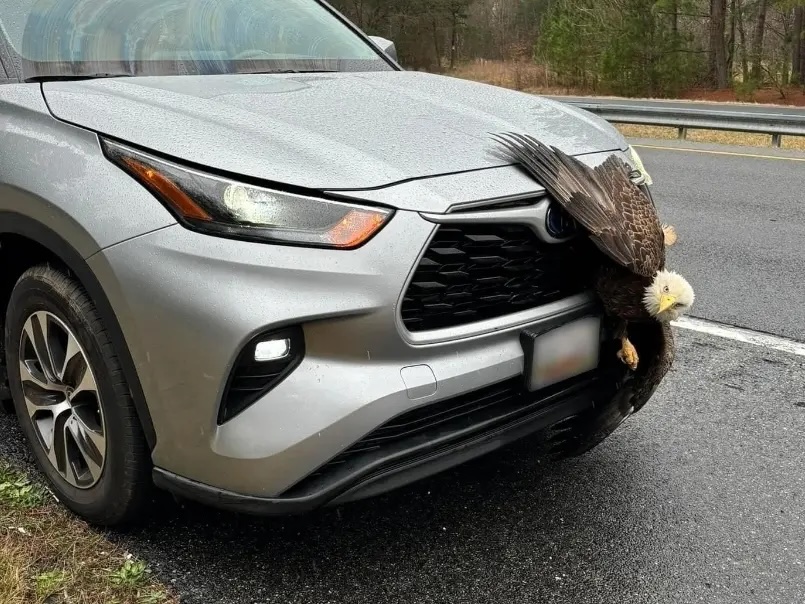
In Calvert County, Maryland, a bald eagle had a close call after it got trapped in the front grille of an SUV. This unusual rescue story started when a driver hit the eagle on Route 4 last weekend. Despite the scary collision, the eagle survived, but its legs were caught in the car’s grille.
The driver quickly called for help, and Animal Control Officer Hannah Neel rushed to the scene. With her background as an emergency veterinary technician, Officer Neel was well-prepared to help the eagle. She even contacted a local veterinary hospital right away, just in case the bird needed immediate medical care.
When Officer Neel arrived, she found that, thankfully, the eagle wasn’t hurt. She carefully checked the eagle to make sure it wasn’t showing any signs of injury or illness. Neel found that the eagle could move all its legs and was responding normally, which was a good sign.
With help from the Calvert County Sheriff’s Office and the driver’s permission, Officer Neel managed to free the eagle from the grille. After making sure the eagle was okay, she released it back into the woods, where it could fly free again.
Julie Yingling, a county spokesperson, praised the teamwork that led to the eagle’s safe rescue. She expressed gratitude for the community’s support and concern for the eagle, as well as for everyone involved in the rescue effort.
This incident shows how quick action and collaboration can lead to a happy ending, even in unexpected situations like an eagle getting stuck in a car grille. Thanks to Officer Neel and the team’s efforts, the bald eagle was able to return to the wild, safe and sound.
Living
Girls Auto Clinic: Empowering Women One Car at a Time

Imagine going to get your car fixed and getting a free manicure or pedicure while you wait. Sounds too good to be true? Not at Girls Auto Clinic in Upper Darby, PA! This unique auto repair shop is run entirely by women and has become famous for its trustworthiness and extra perks like manis and pedis for customers.
The auto repair industry has been mostly male-dominated, with women making up just 12% of the workforce. But Girls Auto Clinic is changing that. Patrice Banks, the founder, was once an engineer who felt intimidated by traditional repair shops. She said, “I was tired of feeling helpless and having to go talk to a guy. I was afraid I was going to be taken advantage of.” So, she decided to make a change.
While still working at DuPont, Banks began teaching herself car mechanics. She realized that finding a female mechanic was tough, so she took matters into her own hands. She enrolled in a night school for mechanics, where she was the only woman among younger male students. Banks eventually left her high-paying job to dive fully into the world of auto repair, gaining experience by working in garages around Philadelphia.
At Girls Auto Clinic, not only do customers get their cars fixed, but they also enjoy free manicures or pedicures. Banks got the idea from her own experiences. “Me and my girlfriend would go to a Jiffy Lube next to a nail salon on our lunch break, get our oil changed, and then get our nails done,” she recalls. This efficient and enjoyable routine inspired her to offer similar services at her own auto clinic.
Banks emphasizes the importance of empowering women to understand their vehicles better. She believes in teaching customers about their cars to help them feel more confident and knowledgeable. “Mechanics do a lot of diagnosing from hearing, seeing, feeling, and smelling. So if we can hear, see, feel, and smell it, so can you,” Banks explains.
Girls Auto Clinic isn’t just an auto repair shop; it’s a place where women can feel comfortable, understood, and empowered. With its unique blend of automotive services and beauty treatments, Girls Auto Clinic is redefining the auto repair experience and proving that women can excel in this field.
Living
A Love Story 80 Years in the Making: WWII Veteran to Marry Near D-Day Beaches
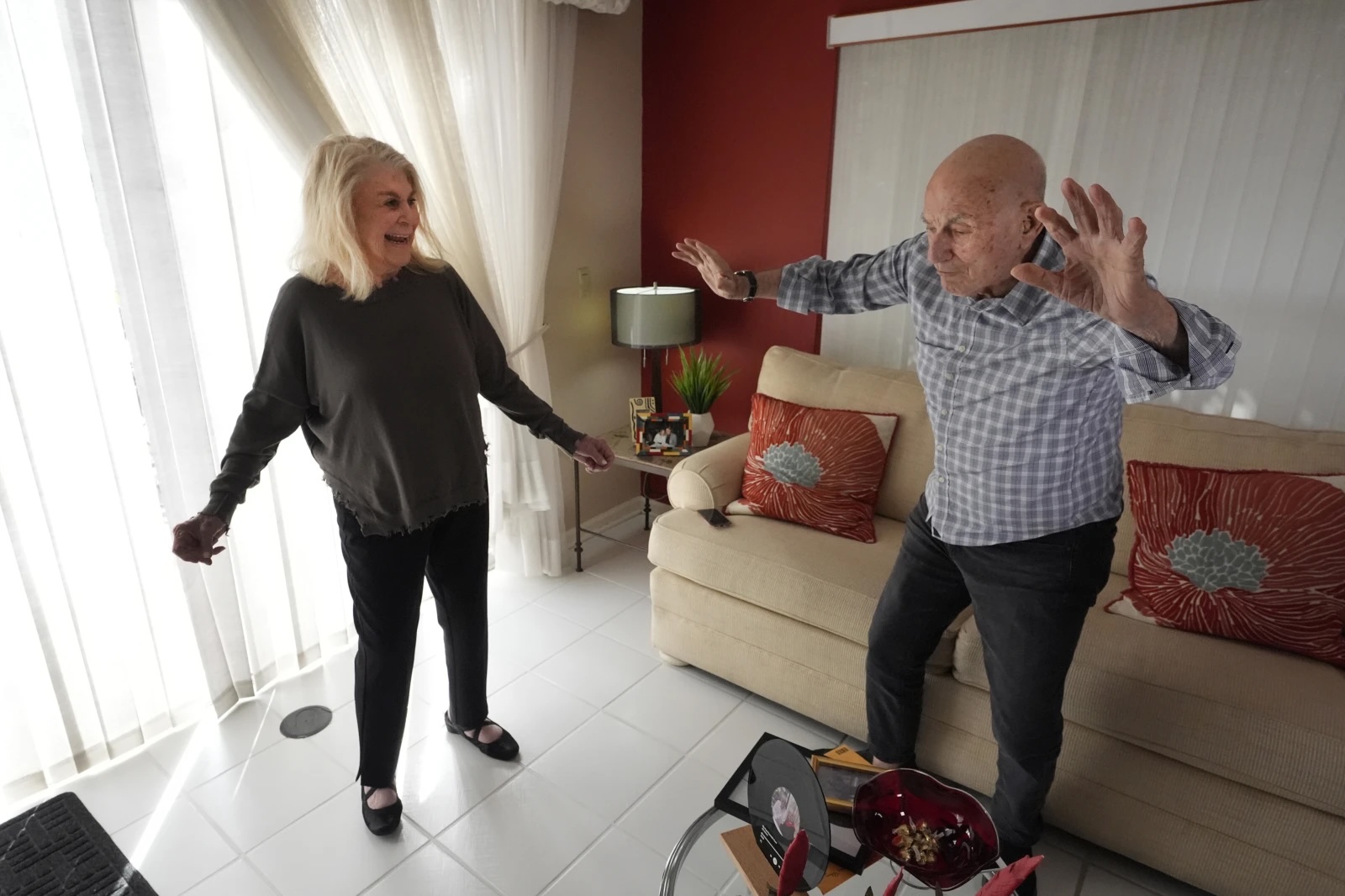
In a tale that spans decades and continents, Harold Terens, a 100-year-old World War II veteran, is set to marry his 96-year-old fiancée, Jeanne Swerlin, near the historic beaches of Normandy, France. This remarkable event comes 80 years after Terens first set foot in France as a young corporal in the U.S. Army Air Forces, shortly after the D-Day landings that marked a turning point in the war.
Terens and Swerlin, who have been dating since 2021, share a youthful spirit and a love for dancing. Their affection for each other is evident as they talk about their upcoming wedding, with Terens declaring, “I love this girl — she is quite special.” The couple even demonstrated their fondness for dancing by grooving to “Uptown Funk” by Mark Ronson and Bruno Mars, showcasing their energy and zest for life.
During World War II, Terens played a crucial role in the aftermath of D-Day, repairing planes that had returned from France so they could rejoin the battle. He vividly recalls the mixed emotions of the time, with German prisoners of war relieved to have survived and American POWs bearing the scars of brutal treatment by their Nazi captors.
In late May, Terens, Swerlin, and their families will travel to Paris, where Terens and a few other surviving World War II veterans will be honored as part of the 80th-anniversary celebration of France’s liberation from the Nazis. This will be Terens’ fourth D-Day celebration in France, where he previously received a medal from President Emmanuel Macron.
The wedding is planned for June 8 in the town of Carentan-les-Marais, in a chapel dating back to the 1600s. Mayor Jean-Pierre Lhonneur, who noted the strong bond between the region and the United States due to the sacrifices made on D-Day, expressed his eagerness to officiate the ceremony. “Normandy is the 51st state,” he remarked, highlighting the deep gratitude felt by the French towards the American liberators.
The mayor is hopeful that an exception will be made to allow him to marry the couple, despite the legal requirement that only town residents can be wed in Carentan-les-Marais. “It will be a pleasure for us,” he said, underscoring the special significance of this union.
This upcoming wedding is not just a celebration of love between two nonagenarians; it’s a poignant reminder of the enduring connections forged in the crucible of war and the power of love to transcend time and history.
-

 OMG6 years ago
OMG6 years agoA Couple Gave Birth to the Most Beautiful Twins Ever
-

 OMG6 years ago
OMG6 years ago20 Rare Historical Photos
-

 OMG6 years ago
OMG6 years agoHilarious Airport Photos
-

 Cute5 years ago
Cute5 years agoMom Refuses to Let Daughter Eat Sugar and Years Later This is What She Grows Into
-

 OMG5 years ago
OMG5 years agoTop Secret Air Force One Facts That You Never Knew
-
OMG5 years ago
The Funniest Yearbook Photos Of All Time
-

 OMG6 years ago
OMG6 years agoRetired Mathematician Restores Log Cabin
-

 OMG4 years ago
OMG4 years agoWhat Happened When This ‘Duck Dynasty’ Legend Chopped Off His Beard?